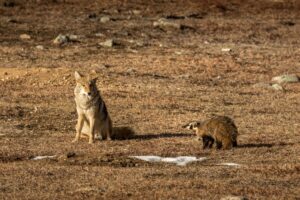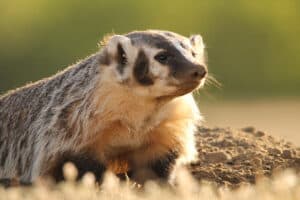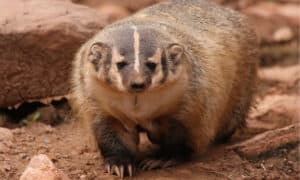Badgers are feisty mammals that live from Canada to Mexico in the Great Plains area. Some species like the European badger, Asian badger and Japanese badger can be found in those areas as well. Badger heads look like skunk heads with a white stripe while their bodies are larger than a skunk with greyish fur. Badgers live in dens that they burrow with their long, sharp claws. Let’s look 9 incredible badger facts:
1. Badger Town! The European Badger lives together in a network of burrows
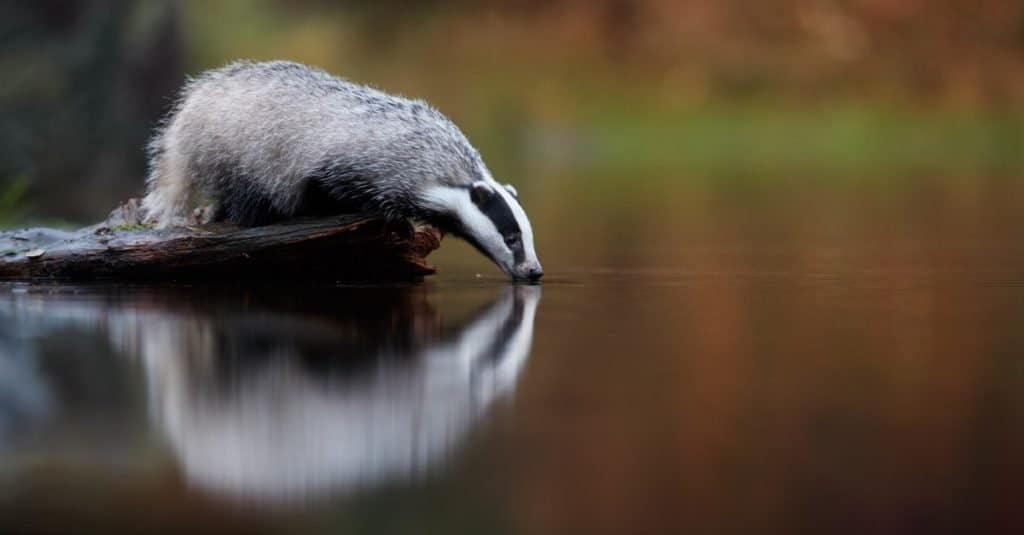
European badger, Meles meles, drinking from forest lake, reflecting itself in the calm water surface.
©Martin Mecnarowski/Shutterstock.com
If you were to stumble upon 40 small holes with piles of leaves and hay, you may have found a Badger Town! European Badgers are social animals and live in family groups. Each group builds a series of tunnels (called setts) with dens scattered throughout. The community has a scratching pole for badger’s claws and they even designate a specific area as the bathroom!
2. European Badgers share their burrows with many different animals.
Badgers seem to be the contractors, builders and landlords of their complex burrow homes. A research group in Northern and Central Italy studied who lived in the burrows of 24 different badger “families”. Without disturbing the animals they used camera-trapping to see who moved in. During the three year study researchers discovered that the badgers allowed eight different species to live in the burrows they built! The animals included crested porcupine, Eastern cottontail, red fox, pine marten, stone marten, wood mouse, brown rat and coypu (swamp rat). The eastern cottontails had a long-term lease and moved in permanently. What an amazing underground town!
3. Badgers take a long winter nap, but do not hibernate.
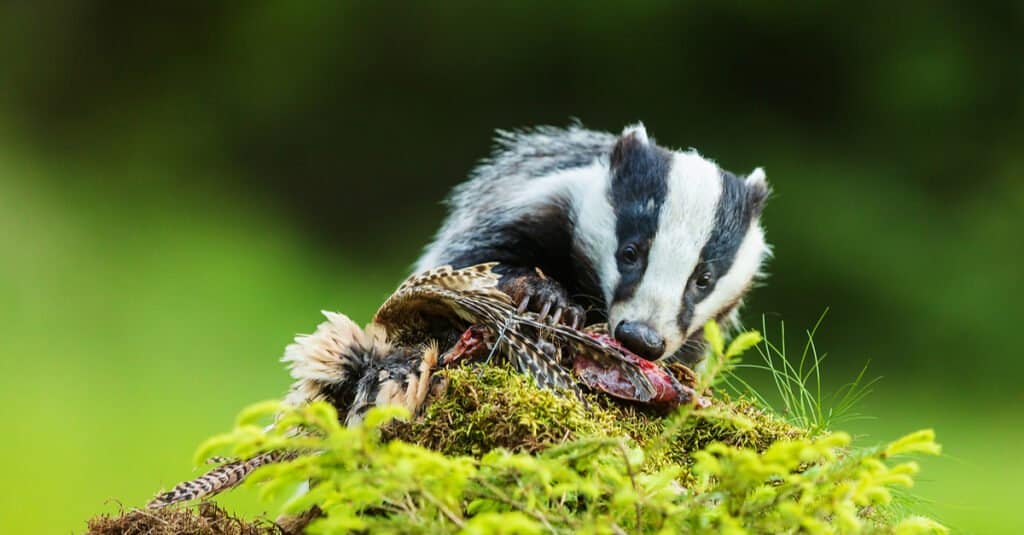
A badger enjoying a meal. Bdagers
©Michal Ninger/Shutterstock.com
Badgers “beef up” in the fall in preparation for the winter months. They do not hibernate but sleep for long periods of time to conserve energy. They live off the body fat that they accumulate in the autumn.
4. Honey badgers get stung by bees, but it may not harm them.
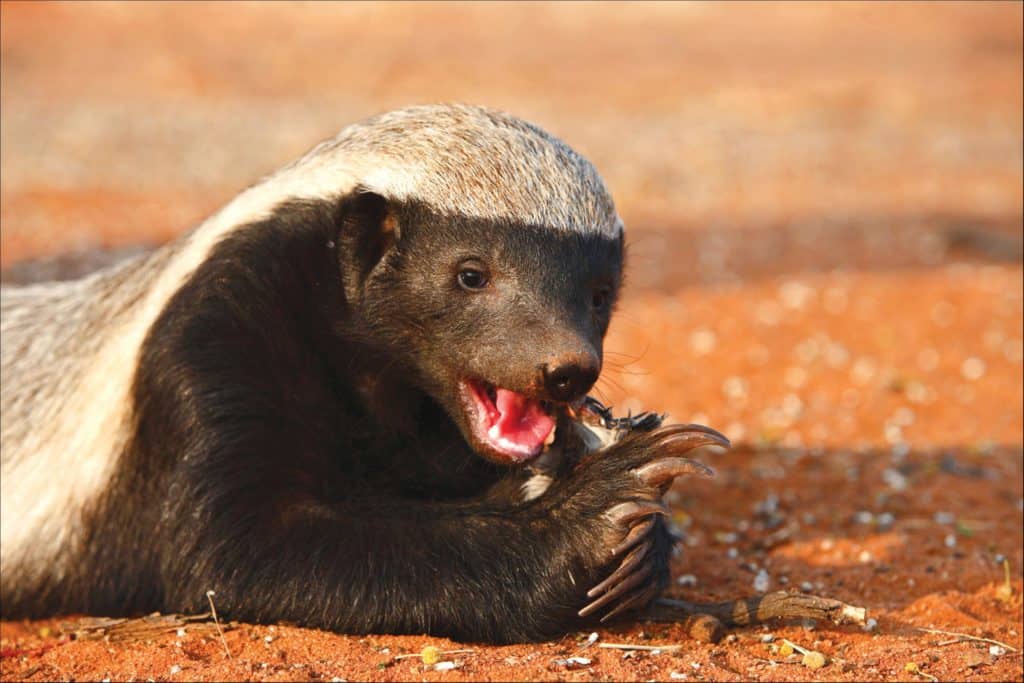
A
honey badger
eating. They can withstand huge numbers of bee stings.
©Erwin Niemand/Shutterstock.com
Honey badgers are not technically badgers because they are in a separate genius, but because we want to know how they can ramshackle honeybee hives and live to tell about it let’s take a look at this badger-like animal. One theory is that the bees are unable to penetrate the thick skin of the Honey badger, so although they get stung it never gets past the skin. A second theory is that Honey badgers are not as affected by the toxins in the venom. That is why they can also have poisonous snakes for lunch! Whatever the real reason is, Honey badgers consistently think it is worth it to raid hives for the sweet honey and bee larvae!
5. National Badger Day is October 6, 2021.
In the UK there is a special holiday to raise awareness about the European badger. Since twenty-five percent of the European badger population lives in the UK, wildlife experts encourage people to learn more about this species and be aware the important role they play in the ecosystem. The extensive underground burrow systems they create provide dens for a wide range of other animals. They also spread seeds across a large area helping a variety of plants. The Badger Trust is trying to raise awareness about alternatives to a Badger Cull. Badgers can carry TB and transmit it to local cattle. The Trust has a short video all about the beloved European badger.
6. One species of badgers is endangered.
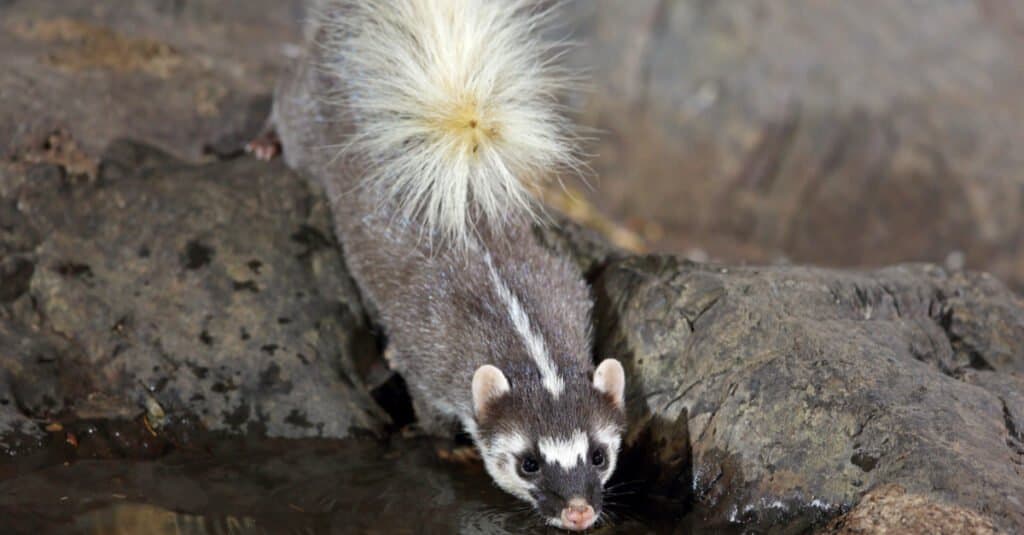
An example of what ferret badger species look like
©teekayu/Shutterstock.com
With a habitat that is only 2000 sq. miles it is understandable how the Bornean ferret-badger is endangered. It can only be found at the northern part of the island of Borneo. If you saw one of these you would not think they are relatives of the aggressive American badger. They resemble ferrets much more than badgers. They are much smaller and have long fuzzy tails. Both kinds of badgers share the long claws for digging. One of the main threats to the species is climate change.
7. Badger vs. Weiner Dog?
Weiner dogs (or Dachshunds) were bred in Germany to hunt down badgers! Their name literally means badger (dachsh) hound (hunds) in German. Because of their long skinny build they were able to chase badgers into their burrows and were able to put up a decent fight. Border terriers are another dog breed that was originally bred to hunt fox and badgers. The shepherds and farmers on the Scottish-English border were looking for ways to deal with the fox and other mammals that preyed on their livestock. Border terriers are good at chasing down fox but also good at digging a fox out of its lair. This made them good at digging our badgers as well!
8. Some badger setts (collection of burrows and dens) are more than 100 years old!
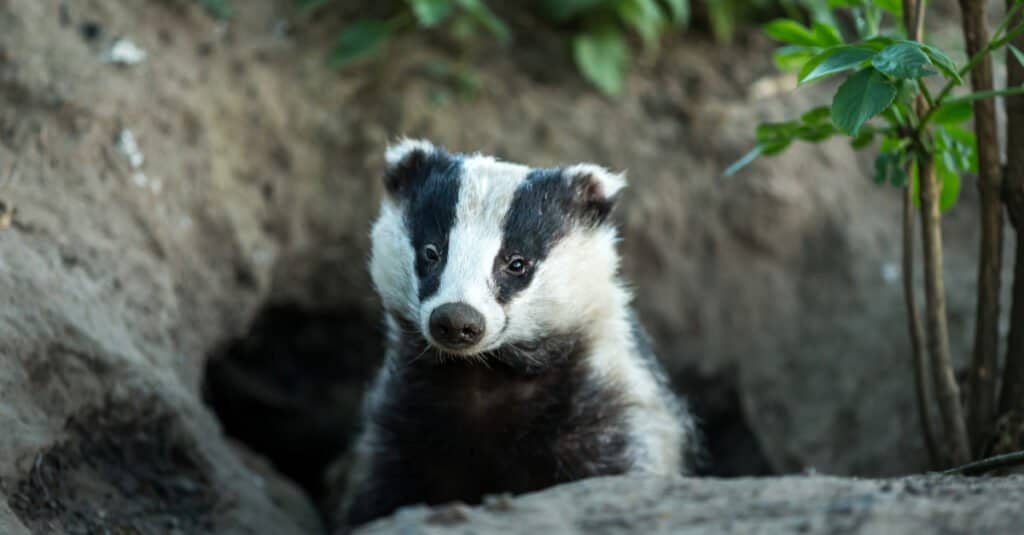
A badger in front of their sett
©Coatesy/Shutterstock.com
The complex set of tunnels and dens created by European badgers are passed down generation to generation. Because of all the work required to build the sett and the number of other animals that rely on the dens, badgers keep using them and letting their offspring use them. “We need to put on addition!” In some cases, badgers remodel and add on to the setts to accommodate growing families.
9. “Make your bed!” Badgers change their bedding daily.
Badgers don’t have memory foam mattresses, but they do like to sleep on “clean sheets”. They sleep in underground dens on leaves, hay and grass. Scientists have observed them removing the old bedding and replacing it with fresh leaves and grass for the following night. In general, badgers tend to keep their burrows and dens very clean.
There you have it, nine badger facts to amaze and wow with. If you’re looking for more information on badgers, make sure to give ‘What Do Badgers Eat? Their Diets Explained‘ a read!
The photo featured at the top of this post is © Coatesy/Shutterstock.com
Thank you for reading! Have some feedback for us? Contact the AZ Animals editorial team.



